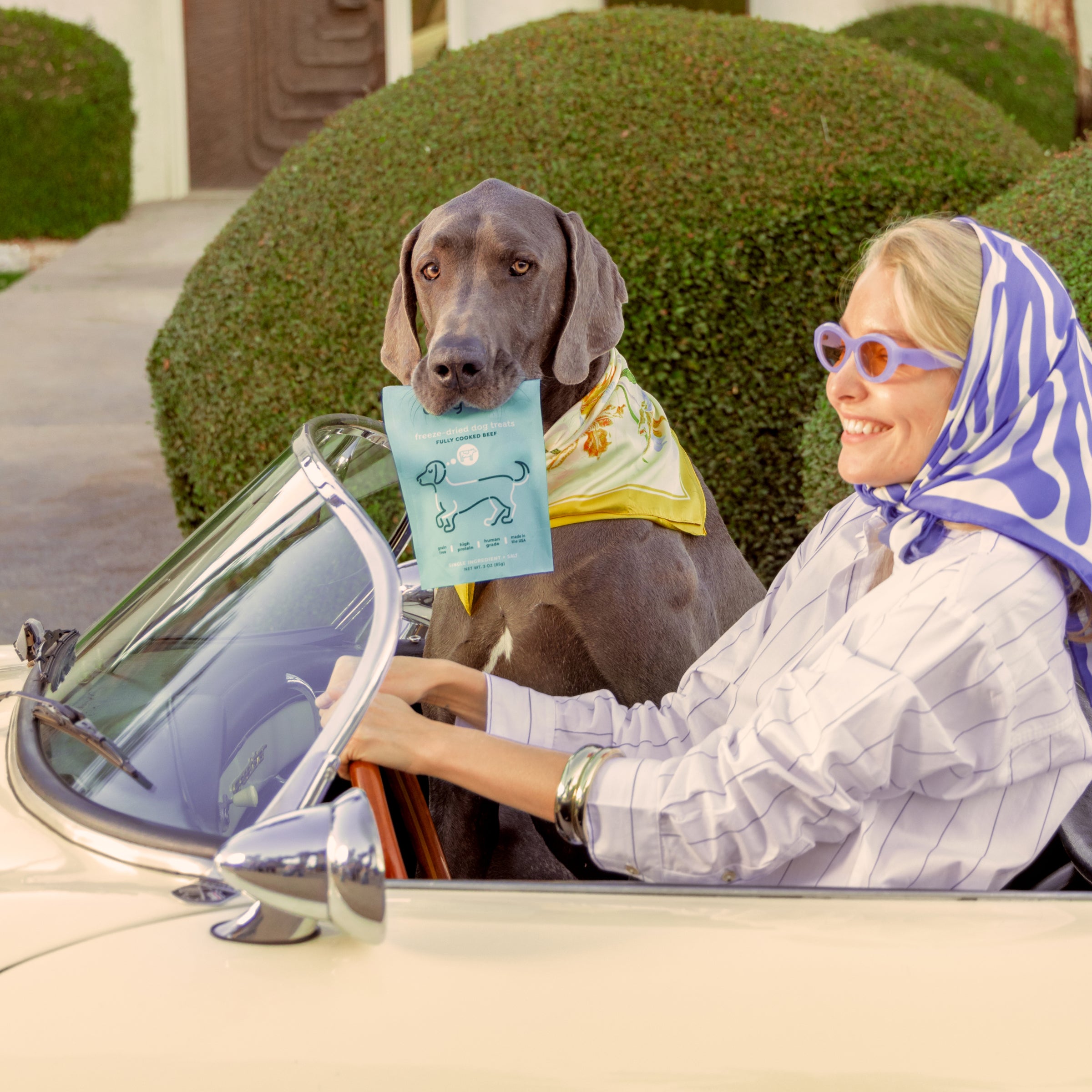

Watching your dog slow down with age can be bittersweet. One minute, they're zipping around the backyard or leaping into the car for a hike. The next, they're hesitating at stairs or needing a boost onto the couch. Dogs experience natural changes in their bodies as they get older–and one of the most noticeable shifts is their mobility.
Natural Aging
Aging affects every system in a dog's body, but their musculoskeletal system–bones, joints, muscles, and connective tissues–takes a particular hit when it comes to movement. As dogs age, they may begin to experience:
- Joint Wear and Tear: The most common cause of mobility issues is osteoarthritis. This condition occurs when the cartilage between joints begins to break down. Without the protective buffer, bones rub together with movement, leading to inflammation, stiffness, and pain.
- Loss of Muscle Mass: Muscle loss is a normal part of aging for both humans and dogs. As muscle tissue declines, dogs lose strength and stability. This makes it harder for them to support themselves, especially in their hind legs.
- Decreased Synovial (Joint) Fluid: Healthy joints heavily rely on a thick, viscous liquid called synovial fluid to keep them lubricated. As dogs age, this fluid becomes thinner and less effective at cushioning joints, which can contribute to stiffness and discomfort during movement.
- Neurological Decline: In some cases, aging impacts the nervous system. Nerves may not fire as efficiently, and communication between the brain and muscles can slow down. This can result in awkward movements, slower reflexes, or even coordination issues.
- Chronic Inflammation: Low-grade, chronic inflammation becomes more common with age and can contribute to joint pain and overall discomfort. Inflammatory conditions can be triggered by diet, environmental factors, or even past injuries that become more pronounced as a dog ages.
Signs Your Dog's Mobility May Be Declining
Mobility issues don't always appear overnight. They usually creep in slowly, so it's important to watch for subtle signs like:
- Slower walking pace or shorter walks
- Difficulty standing up or lying down
- Hesitation to jump on furniture or into the car
- Limping or favoring certain limbs
- Changes in posture of gait
- Avoiding stairs or slipping on smooth floors
- Decreased interest in play or exercise
How You Can Support Your Aging Dog's Mobility
While we can't turn back time, we can take steps to support our dogs as they age and help them move more freely and comfortably. Here's how:
- Supplements: Ingredients like glucosamine, chondroitin sulfate, and MSM are well-known for supporting joint health. They work by helping to maintain cartilage, reduce inflammation, and improve the quality of synovial fluid. Anti-inflammatory omega fatty acids can also play a powerful role in promoting joint comfort and flexibility.
- Maintain a Healthy Weight: Extra weight puts additional stress on aging joints. By keeping your dog at a healthy weight through a balanced diet and portion control, you're reducing unnecessary strain on their body.
- Gentle Exercise: Regular, low-impact activity is key to preserving muscle mass and keeping joints from getting stiff. Think short walks, swimming, or even physical therapy exercises tailored for senior dogs.
- Comfortable Living Environments: Simple home adjustments can make a world of difference. Non-slip rugs, orthopedic dog beds, and ramps or stairs to get on the couch or bed can help reduce the risk of injury and support independence.
- Regular Vet Check-Ups: Don't underestimate the value of routine veterinary care. Your vet can monitor your dog's mobility, screen for arthritis or other conditions, and recommend personalized solutions, including medications or supplements.
Help Your Dog Thrive in Their Golden Years
Mobility Decline is a natural part of your dog's life journey, but it doesn't have to mean the end of adventure. With the right care, nutrition, and a little extra love, you can help your pup feel more like themselves–keeping them comfortable, confident, and ready to explore life by your side. Aging is inevitable–but slowing down doesn't have to be.




